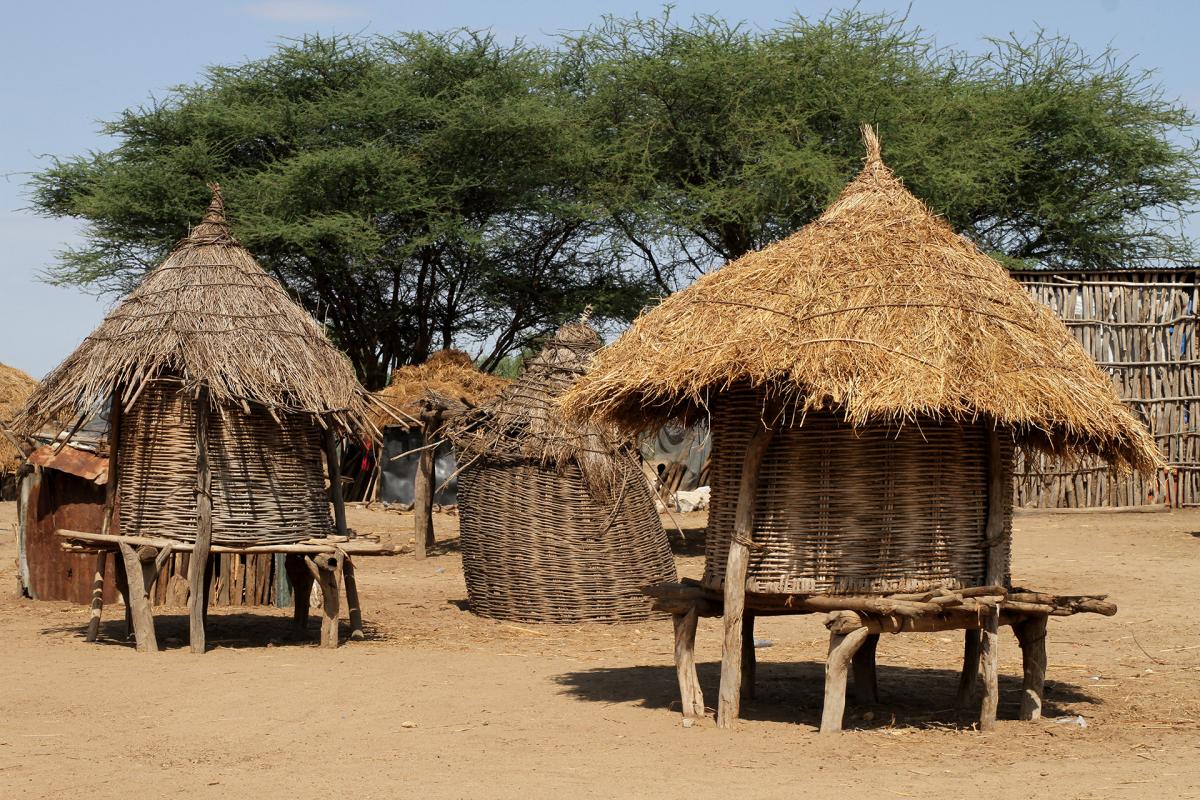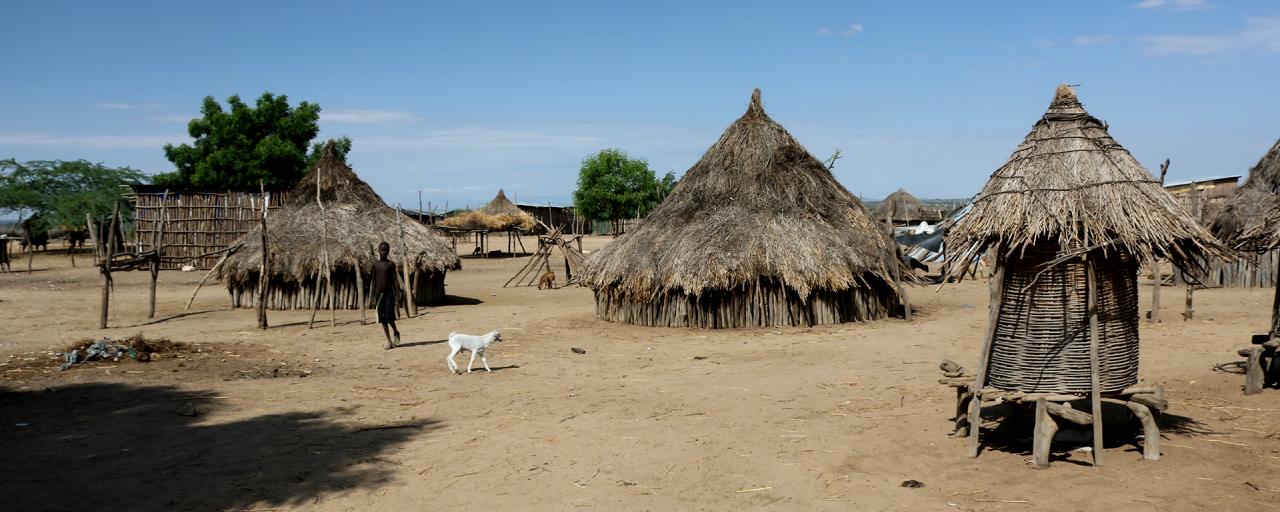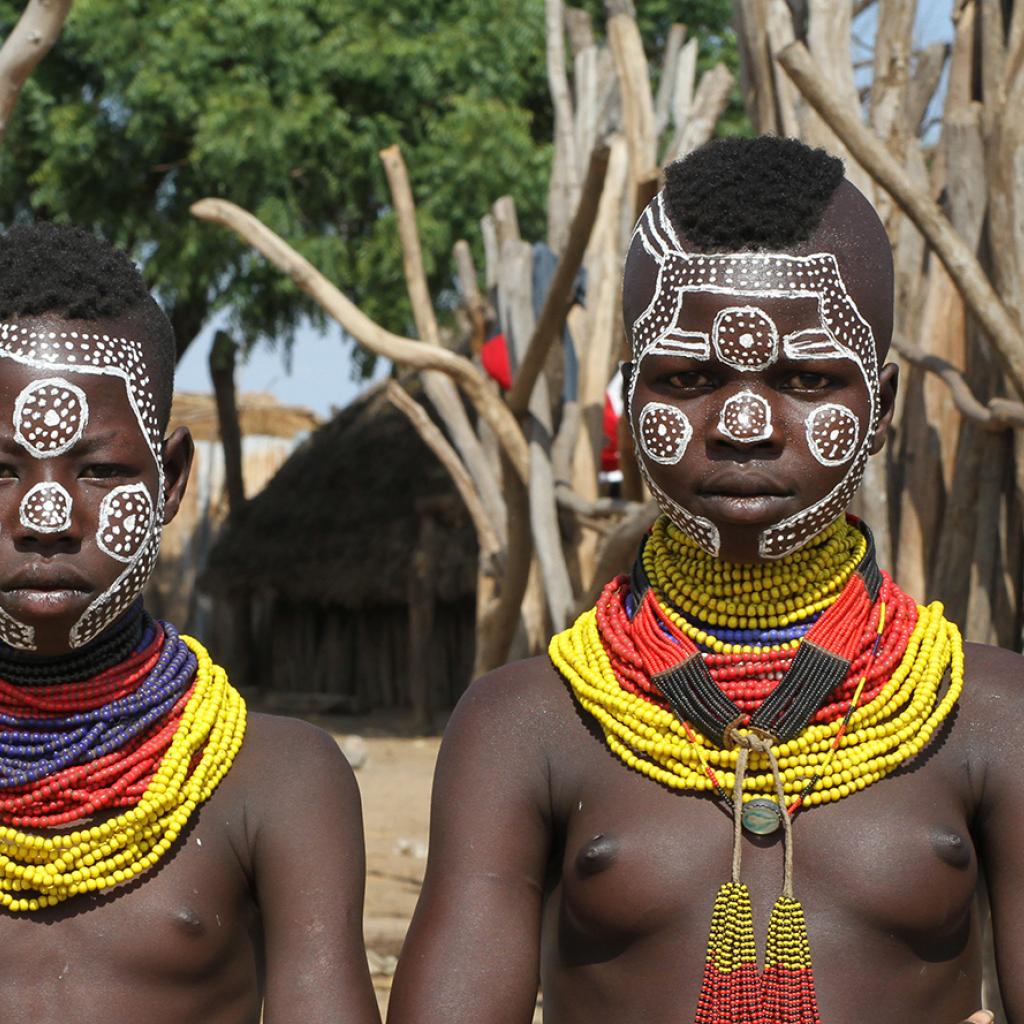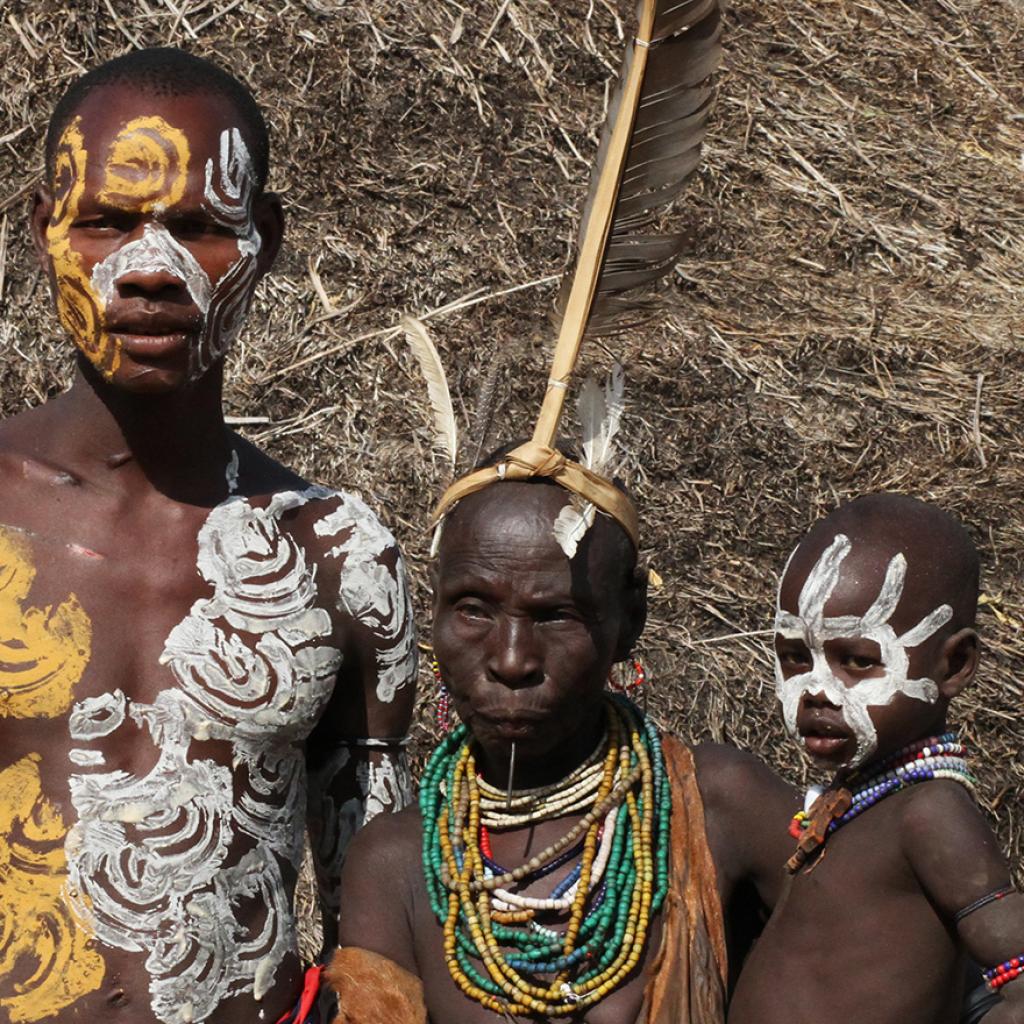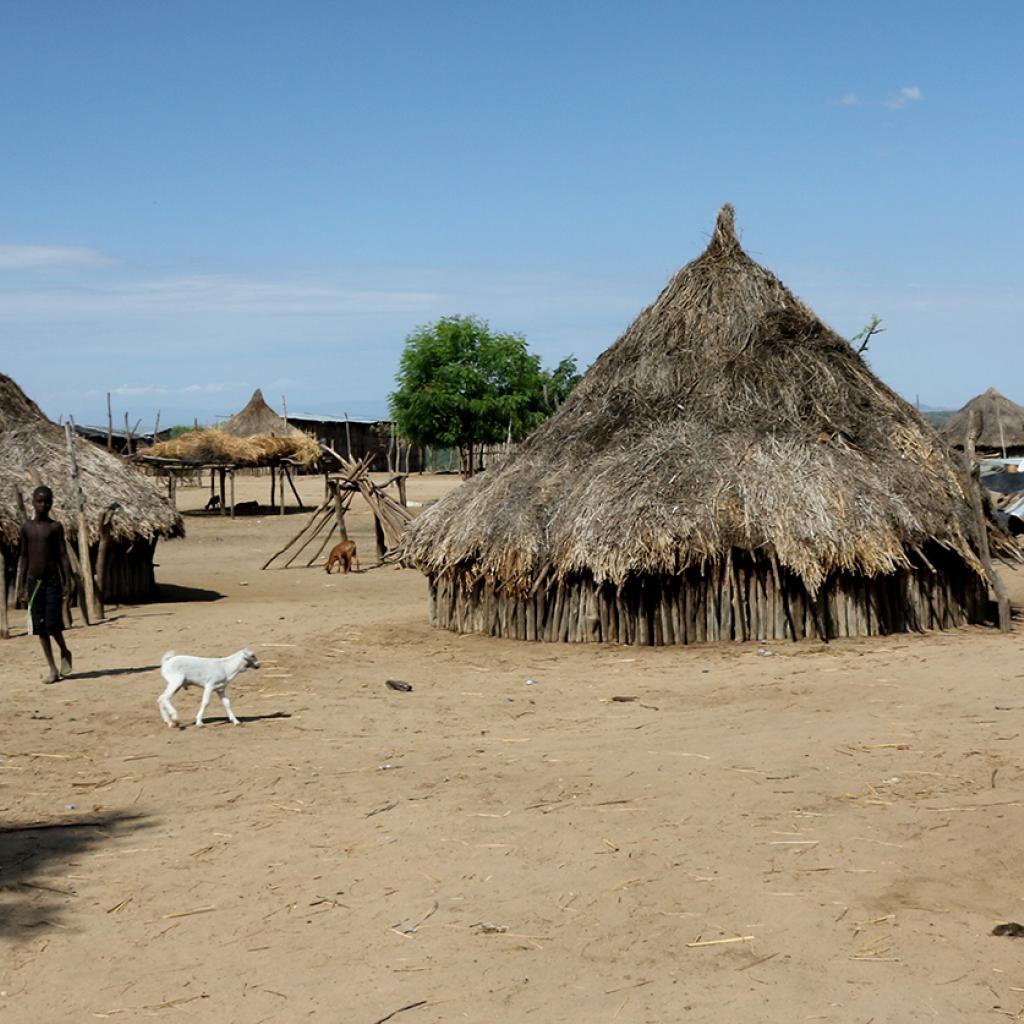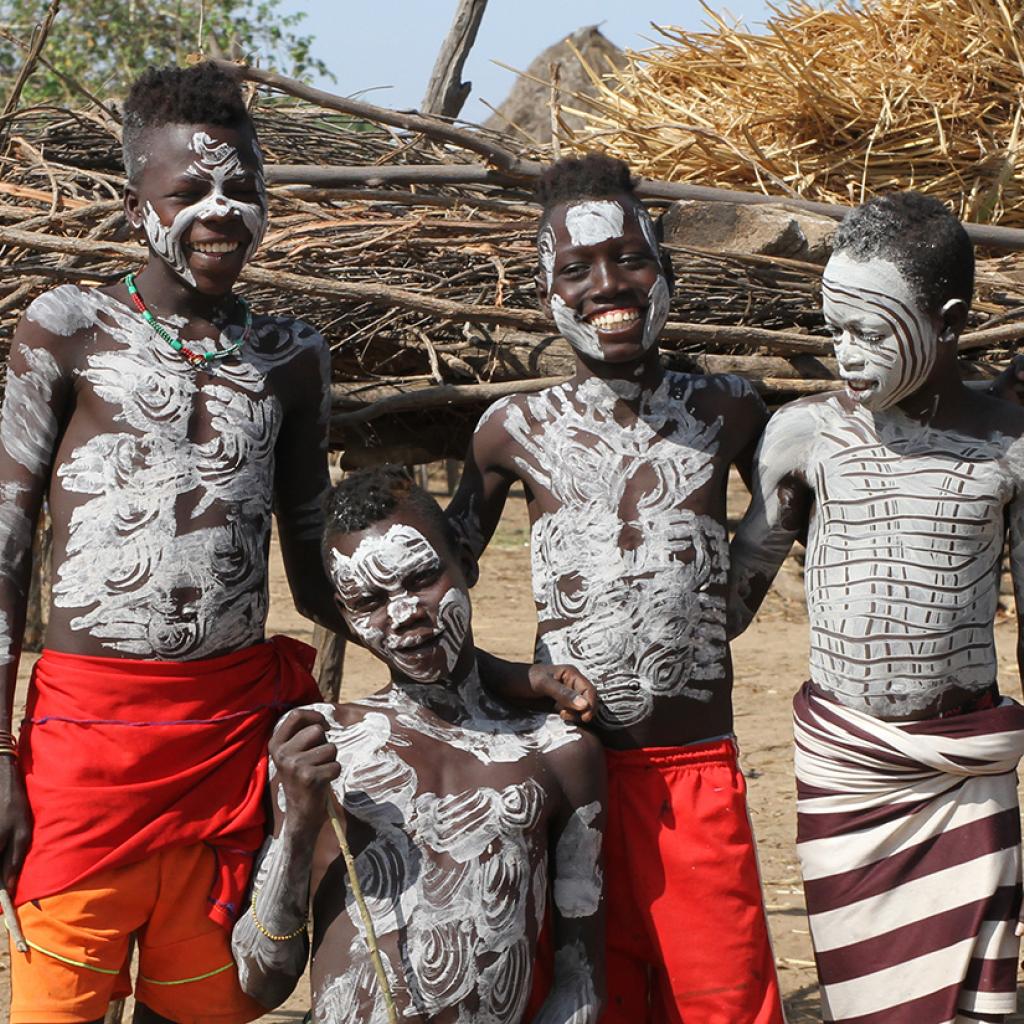The Kara, also known as Karo, are the least numerous ethnic group in the Omo Valley, in Ethiopia, it is estimated that this tribe consists of a number of people ranging between 1,000 and 3,000 units.
The Kara live along the Eastern shores of the Omo River, there are three main villages and numerous isolated farms scattered among the arable land.
The villages of the Kara in Ethiopia
The typical village of the Kara consists of a series of round huts, built by intertwining poles made from branches, that are then covered with mud to form the perimeter walls, the conical roof has a framework of wooden poles and is then covered with straw and local herbs; the Kara do not use stones in the building.
Typically the village consists of about thirty huts, grouped around a central meeting point; there are also several small pile-dwellings, on which there are shelters for small animals or deposits for grain, in order to protect and preserve them.
Inside the village there are also robust enclosures, made with large trunks, that are used to gather and protect livestock during the night.
Cattle and goats are the most significant assets of a Kara family and determine his wealth and status, but it is the crops, obtained thanks to the permanent waters of the Omo River, that sustain and feed the Kara.
Each Kara family has two huts: the Ono, this is the main hut of the family, here the head of the family, his wife and children shelter for the night, and the Gappa, that instead serves to carry out various domestic activities and as kitchen tools storage.
Usually the meals are cooked outside but during the rains the preparation moves inside the Gappa hut.
The main hut is used by the whole family, but if a man marries more women, at most he can marry three, each wife will have her own hut.
The social organization of the Kara in Ethiopia
For the Kara the family represents the social unit of reference, the Kara are then grouped into patrilineal and exogamous clans; clan members take part collectively in weddings and other rituals and take decisions about the distribution of the property.
Men, young and adult, are divided into age groups; the alliances that are created within these groups are very important and, at times, are stronger than the parental relationships.
The Kara are headless, they do not have a king or supreme leader, they are the elderly who come together to take political decisions and to resolve disputes; women are excluded from the decision-making process.
The relationship of the Kara with neighboring tribe
The territory of the Kara borders with the territories of much more numerous and rich tribes, such as the Hamer, the Mursi, the Banna and the Nyangatom; the Kara have always maintained commercial relations with these tribes, exchanging fabrics, beads, livestock and food supplies, but have never wanted to unite through intertribal marriages.
Today it can happen that there are unions with the Hamer, given the many similarities that exist between the two tribes in terms of traditions and rituals; but in the past even unions with the Hamer were forbidden.
In order to defend themselves and keep their lineages pure, the Kara have created and maintained a series of rules and prohibitions, including the prohibition of having mixed marriages and the prohibition of having children outside marriages approved by the elderly.
A particularly bloody ritualinvolves the killing of children born without the approval of the elderly, the Mingi children, this is the name with which they are identified, they are considered impure and carriers of misfortunes and famines and for this they must be removed from the village and left to die in the savannah, devoured by crocodiles or other predators, or trivially left to die of hunger and thirst.
Usually the Kara are a peaceful population and do not engage in struggles with neighboring populations, also because, given that they are a tribe numerically inferior to the others, they could easily succumb; however, they have hostile relations with the Nyangatomwith whom several armed clashes occurred.
The one with the Nyangatom is a conflict that has its roots in the past, long ago the Kara lived on both shores of the Omo River but the Nyangatom extended their territories and forced the Kara to take refuge on the Eastern bank of the river.
This migration was not peaceful, the Kara and the Nyangatom tried to steal the herds from each other by making raids in the villages of others, these violent raids inevitably resulted in armed clashes that saw some warriors lose their lives.
Today the situation has improved and the clashes between the two tribes are only a distant memory; men continue to go around armed with their AK47s that, however, are almost exclusively a status symbol.
